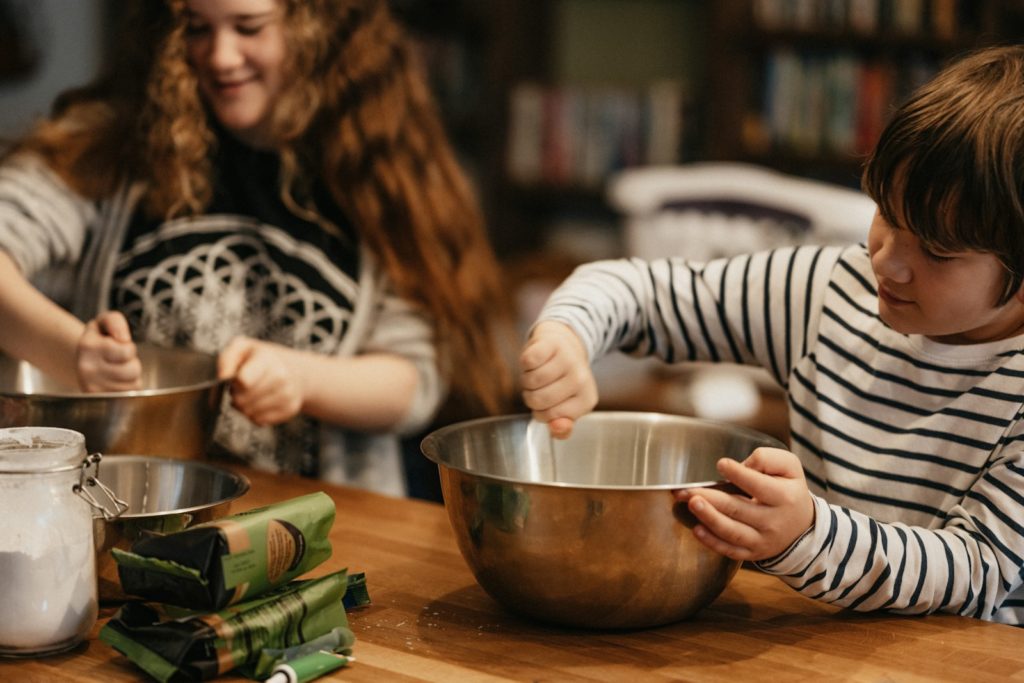Introduction
As parents, we all have the best intentions for our children and what they eat. A healthy lifestyle is the goal we strive for, but life throws curve balls at us repeatedly. How do we feed our child who is a fussy eater? What makes up a healthy meal and how can we get our kids to eat it? What do we do when they won’t eat? How can we cook healthy meals?
There is so much information out there that it can be overwhelming to sift through, where do we find the practical answers that will help? How can we make it work for us? Today we want to share some of our experiences, tips and strategies to promote healthy eating.
We will explore children’s nutritional needs, strategies to encourage healthy eating, healthy eating on a budget, creating a healthy eating environment, education and empowerment and common challenges and solutions.
Understanding the nutritional needs of our children
Balanced nutrition is essential for children’s health and growth. No matter what age your child is, just like us they need to eat a variety of foods. In fact, from the age of 2, your child has the same nutritional needs as adults.
A healthy diet for children includes vitamins, minerals, fibre, protein, calcium and iron. All of which can be found in the main 5 food groups. Fruit and vegetables, starchy foods and carbohydrates such as bread, rice, pasta and potatoes, dairy and dairy alternatives, protein such as beans, pulses, meat, fish and eggs and unsaturated fats are all important. The Eatwell Guide shows us the proportions of each food group that we should be aiming for.
Strategies to encourage healthy eating
Role Modelling
Be a positive role model, children learn from watching and copying others. Demonstrate healthy food choices as a normal part of your life. Having healthy food on your plate in the presence of your child gives them more exposure to those good foods.
Making Healthy Food Fun
Introduce some fun around food and mealtimes. Colourful plates, cups and a tablecloth can make the table setting more appealing. Try arranging food into shapes or create a food picture on the plate before serving it as a special treat. Round up the meal with a game at the table or take turns to tell some jokes to finish on a positive note.
Food fun can also take place outside of meal times. For younger children sensory play trays with a few different types of food are a great way to get children to explore, touch and taste new foods. Printing with sliced vegetables and fruit lets children feel different shapes and textures while exploring process art.
For older children, online culinary games are also a great way of building fun around the food theme and can be a great interactive and educational tool. Recently we’ve been playing games on healthy living, food and cooking and there is so much choice that there is something for each kid to play happily.
Involving Kids in Cooking
When you can, involve the children in making the meal. There are lots of children’s cookery books and blogs out there with some great ideas for recipes or simplify a recipe you already use. Kids are far more likely to try the food if they have had a hand in making it. This also introduces food preparation and cooking as an important life skill for the future and helps to develop a greater interest in healthy eating.

Consistent Meal and Snack Times
Keep things consistent, children respond well to routines and get some comfort in knowing what to expect and when things are going to happen. Regular meal and snack times can help to ensure that children come to the table when asked and come ready to eat. This can also help avoid snacking too close to mealtimes which can lead to meals being unfinished or not eaten at all and then hunger later on.
Healthy Eating on a Budget
A tight budget can be a big hurdle for many when trying to eat more healthy foods, but there are some things we can try to make things more manageable. First of all, know your food budget before doing any food shopping, this will help to avoid accidental overspending. Buying healthy foods whilst sticking to a budget is more manageable if you plan to eat within your means.
Make the most of meal planning and generate your shopping lists from there. Meal planning is a great way to plan those healthy budget-friendly recipes and reduce food waste. Take into account your store cupboard items that you already have to avoid repeatedly buying things you don’t need. Planning to use seasonal produce is also beneficial to avoid the higher price of off-season ingredients.
When shopping take advantage of any current vouchers or discounts and sign up for your local supermarket’s loyalty reward scheme. Bulk buying certain items can be a way of saving some cash.
Creating a healthy eating environment
Creating a healthy eating environment in our homes is an important factor in maintaining healthy habits. If we can stock a healthy kitchen, we can have healthy options readily available to us. Taking the temptation of junk foods away and exchanging them for easily made healthy alternatives can be helpful for some people. If the unhealthy food isn’t in the house, we can’t eat it.
Educating ourselves on healthy staples, ingredients and recipes can give us the power to make positive changes, for example, introducing healthy snack swaps or swapping jar sauce for a simple homemade sauce. When choosing fresh ingredients, cooking and avoiding processed foods are also beneficial.
Discuss the importance of family meals and the value of eating together and sharing mealtimes with your children. Creating a pleasant dining experience for everyone in the family with make mealtimes more enjoyable and let children see you as a good healthy eating role model. Mealtimes are a great opportunity to connect, chat and catch up with each other.
Education and Empowerment
Children can find sudden changes hard, so before you stop buying their regular snacks and swapping them for a healthy alternative, talk to your child about your aim of healthy eating for the whole family. When children can understand why something is happening they are more likely to give new systems a try.
Teach your children about the benefits of healthy eating in an age-appropriate way. Healthy eating is taught in schools, but it becomes even more meaningful when they hear it from you, see it and experience it themselves at home. Helping our children to learn about nutrition can help them to make healthy choices of their own.
Empowering our young people and allowing them to make their own healthy food choices with support as needed can be helpful. Giving a choice of meals or snacks to choose from can help children feel part of the decision-making process and more involved in these positive changes.

Common Challenges and Solutions
Dealing with Picky Eaters
Picky eating can be the biggest hurdle for many families and there are many reasons why children may be fussy eaters. Seek advice from your health visitor or doctor if you need more personalised advice on how to help your child.
Fussy eating needs to be tackled with patience and persistence, with strategies for gradually introducing new foods whilst still offering your child’s safe foods. Building exposure to new foods and using positive reinforcement to encourage trying new foods is important. Avoid pressure and conflict at mealtimes and focus on creating positive food experiences.
Busy Schedules
For our family, busy schedules are a real barrier to healthy eating, this is something we have found challenging. With the children’s morning and after-school clubs and our work commitments, it can be hard to make healthy meals especially if we have to cook from scratch.
Some of the things we have found useful to help us with this are meal planning, batch cooking and sticking to easy and quick recipes. Having a growing bank of tried and tested recipes has been helpful when meal planning and trying family-friendly recipes.
Social Influences
Sometimes social situations such as parties or school events can be challenging when unhealthy food is the only option. Talk to your child about the best choices to make in that situation. Remember having some of these foods occasionally or as a treat is not necessarily a bad thing. An outright ban of unhealthy foods can make them more desirable and that is something we want to avoid if possible.
Food Allergies and Sensitivities
If food allergies and sensitivities are holding you back, consult a nutritionist to get further advice about alternative healthy choices. There is no one-size-fits-all model, you will need to find out what works best for your family.
Conclusion
Positive food experiences and environments are key when it comes to healthy eating and our children. We are all doing the best we can with the tools we have. By educating ourselves on healthy eating we are showing our children how to be healthy themselves. Each mealtime is another step in our healthy eating journey, sometimes we’ll go forward and sometimes we’ll go backwards. The important thing is that we keep going and strive to be the healthiest we can be with our diet and lifestyle, for both us and our children.

